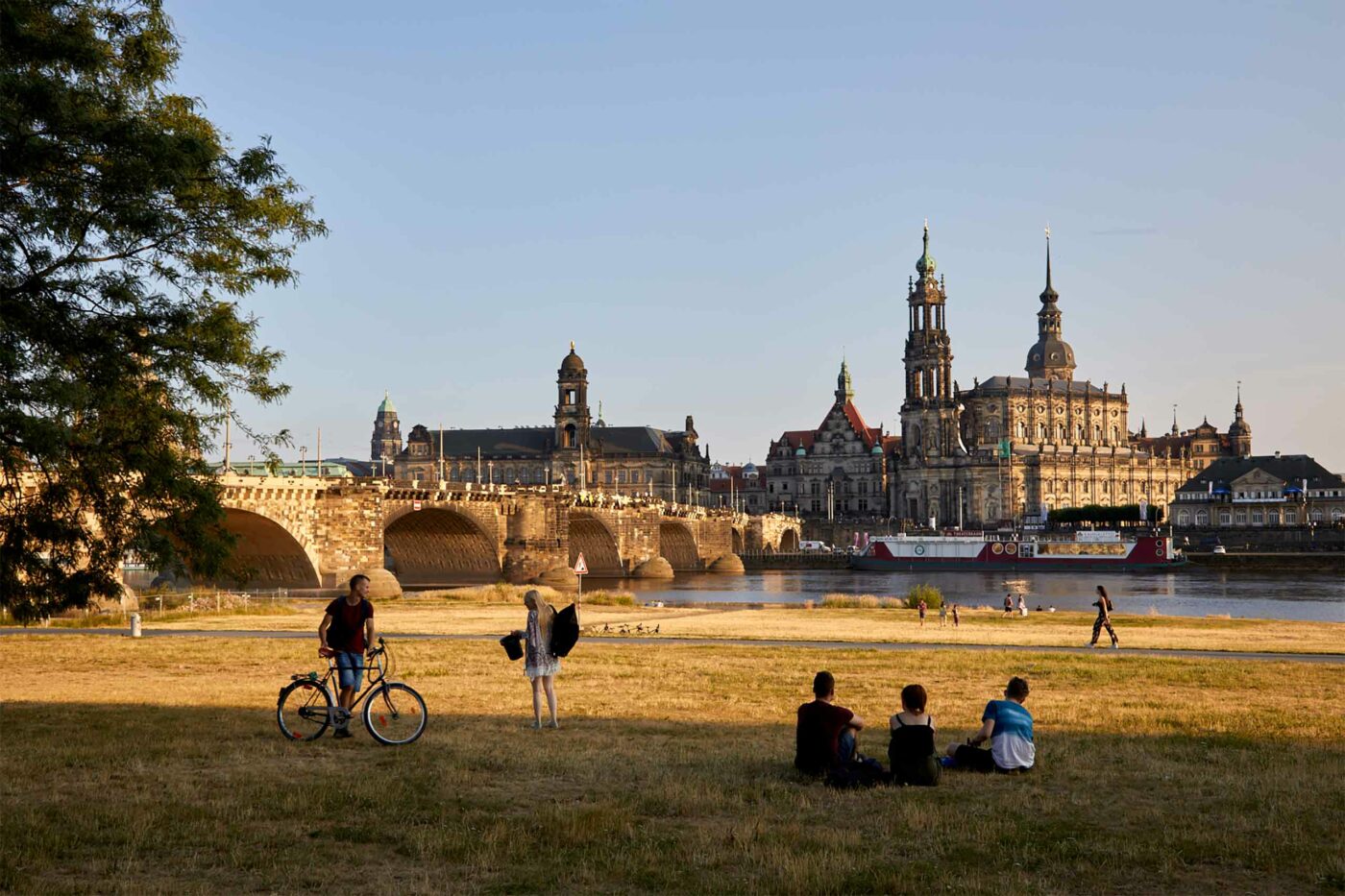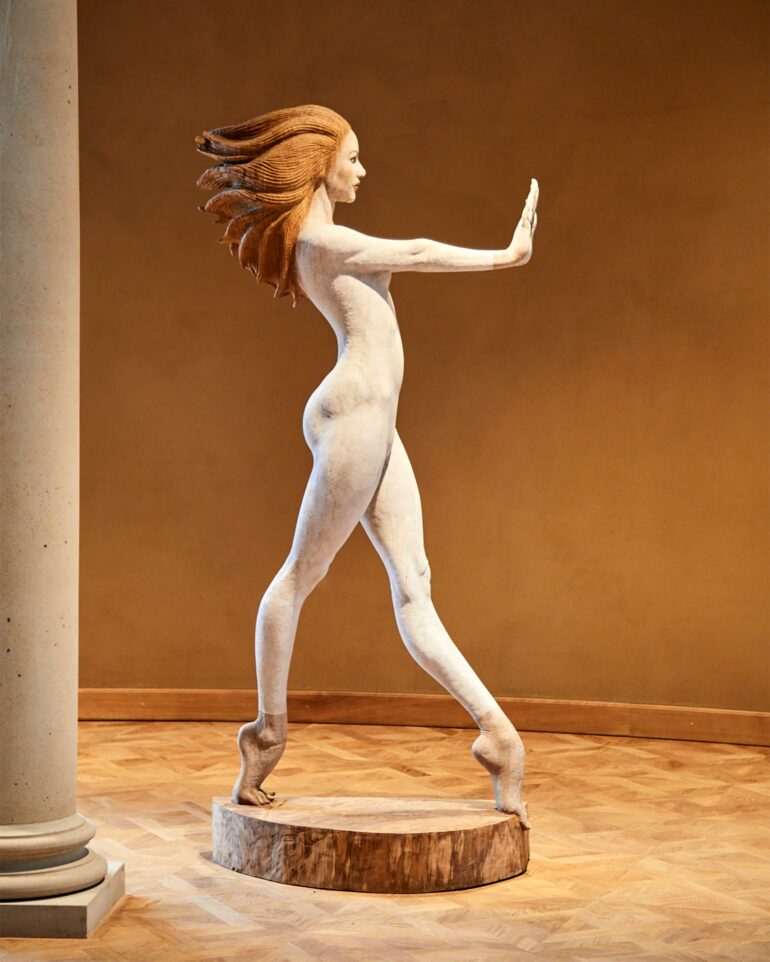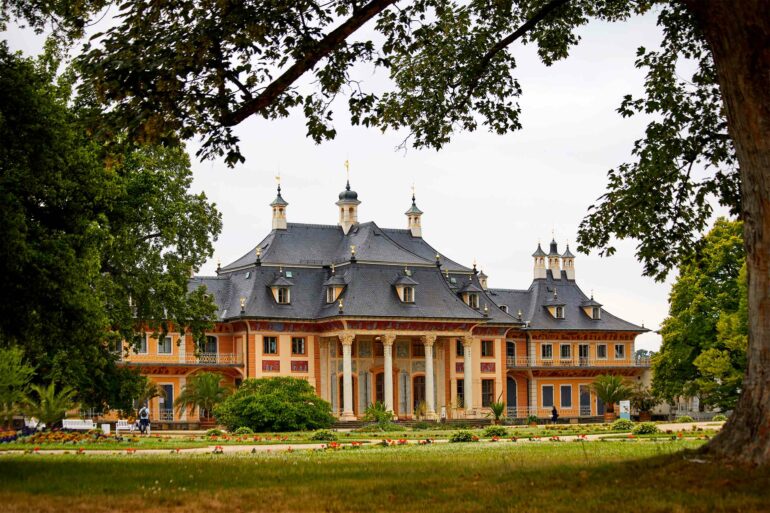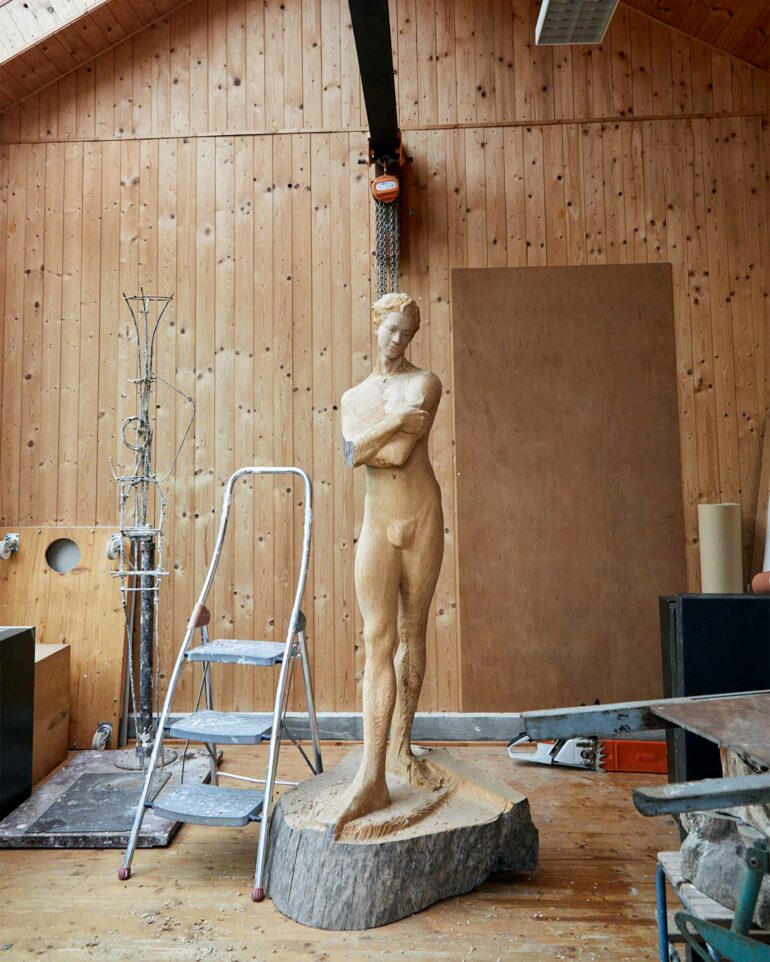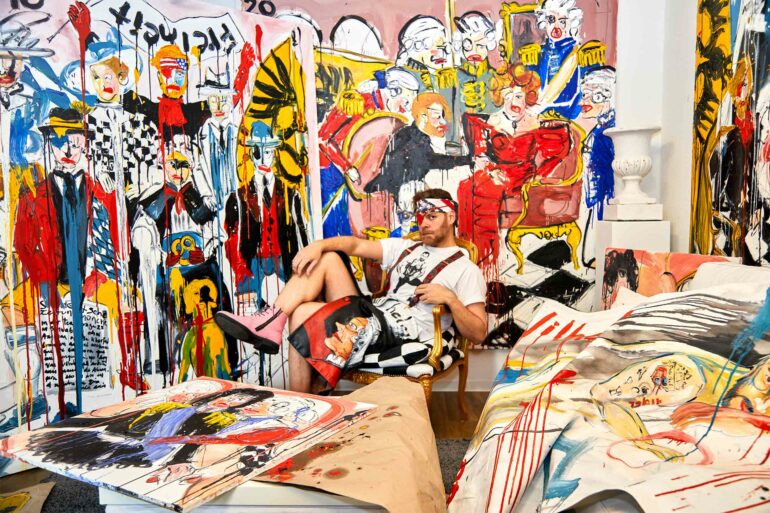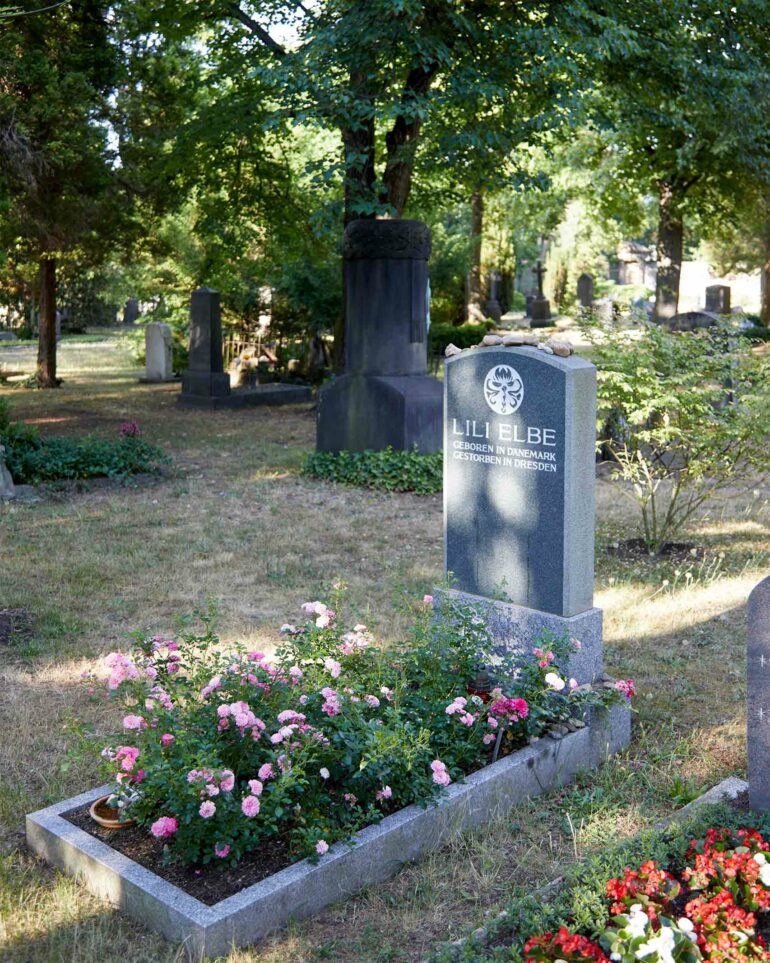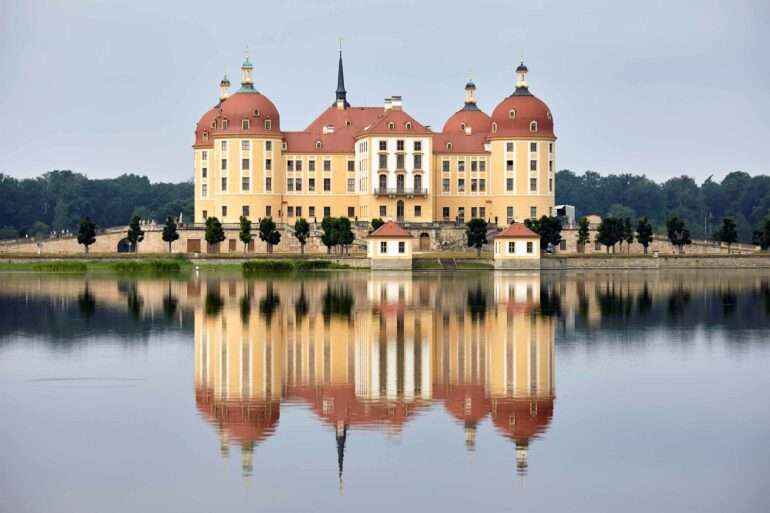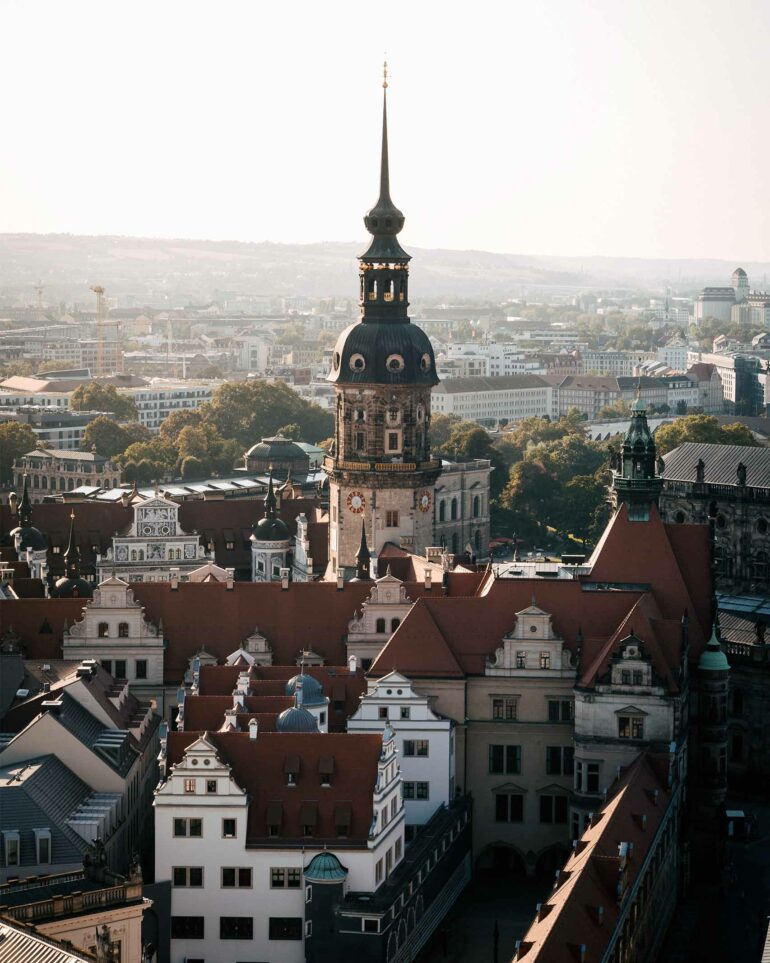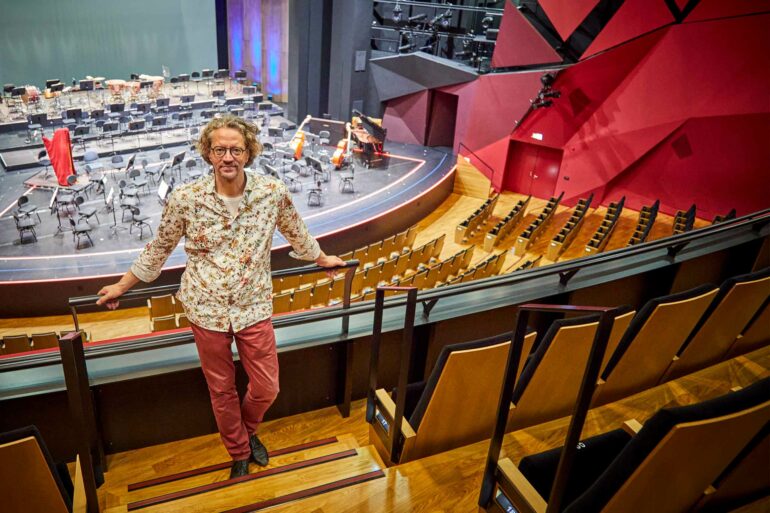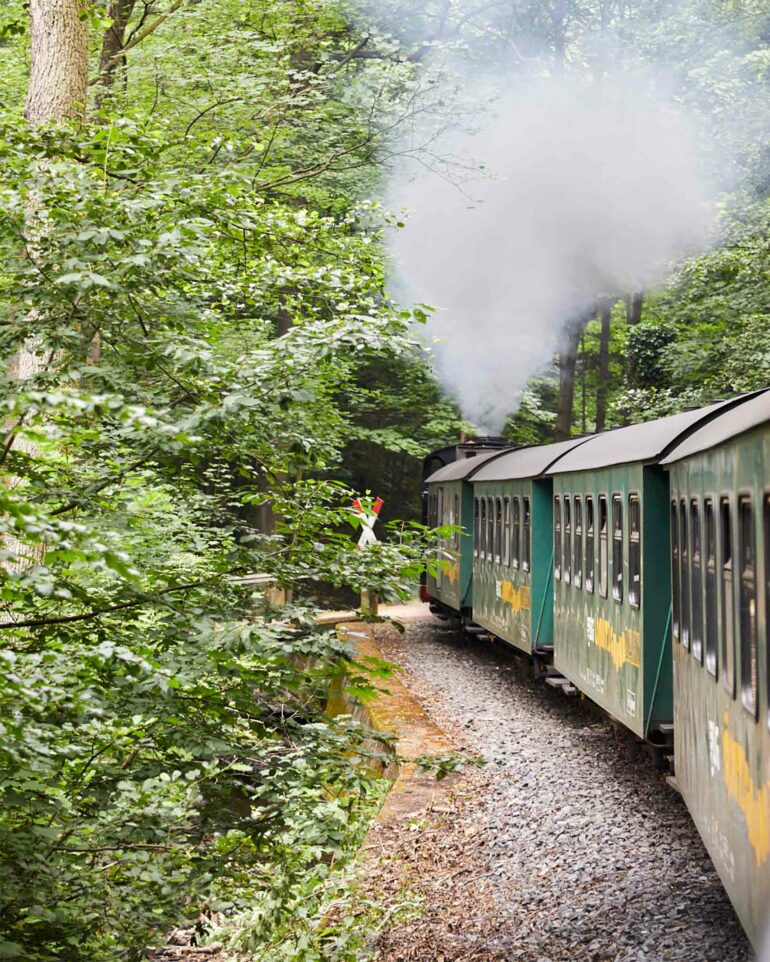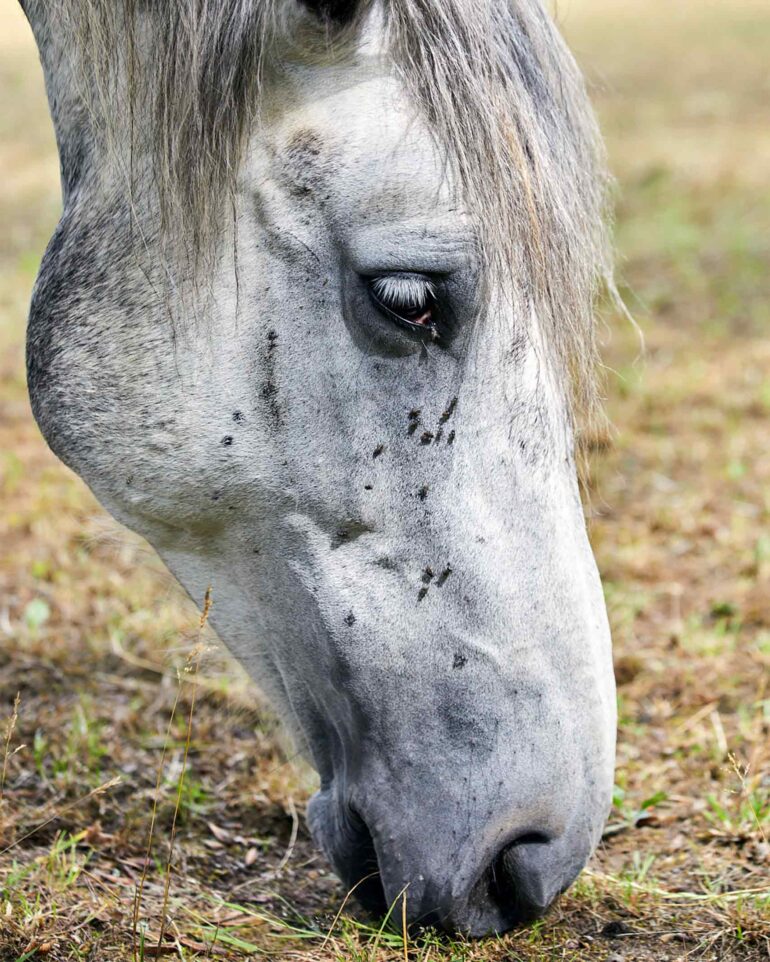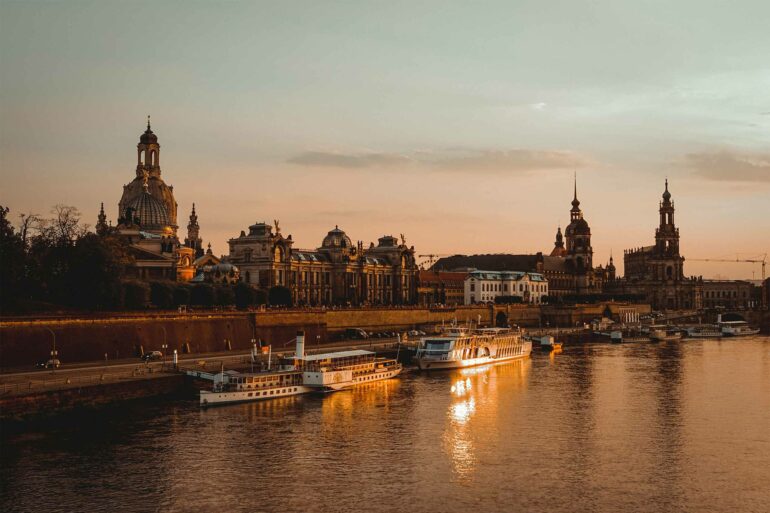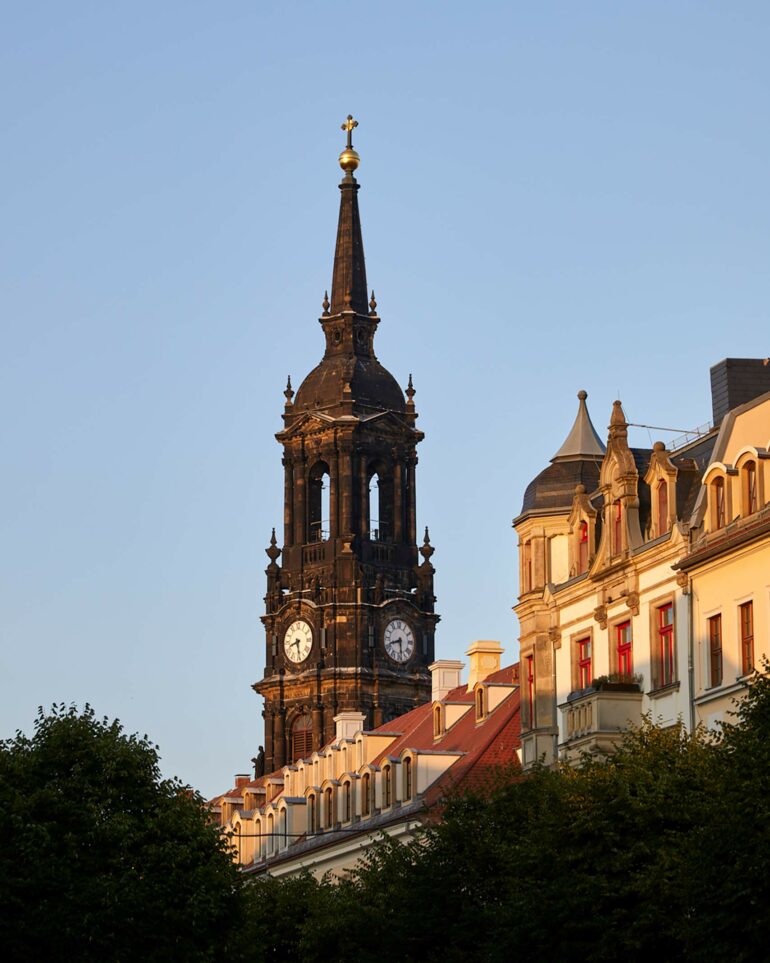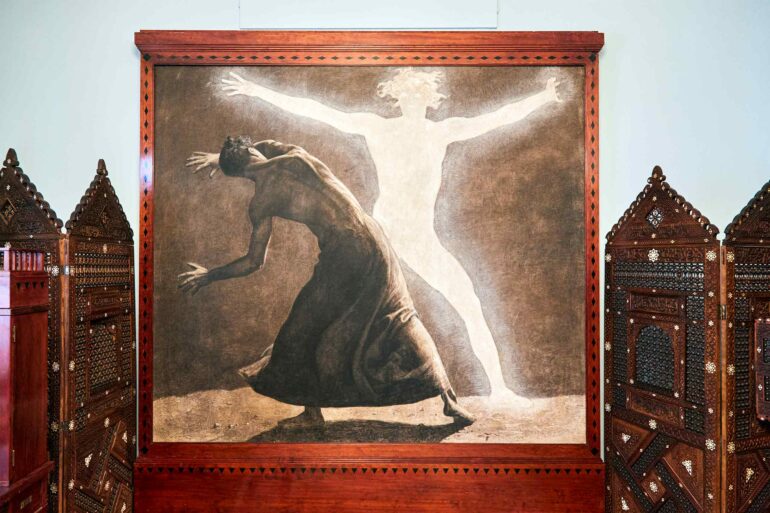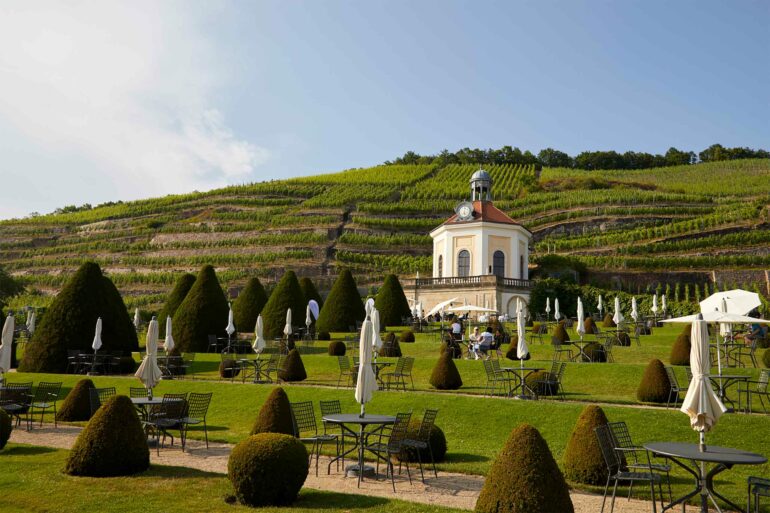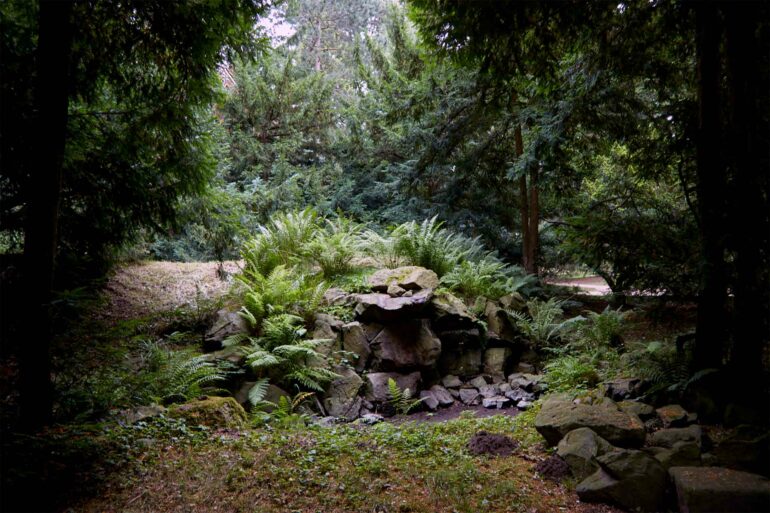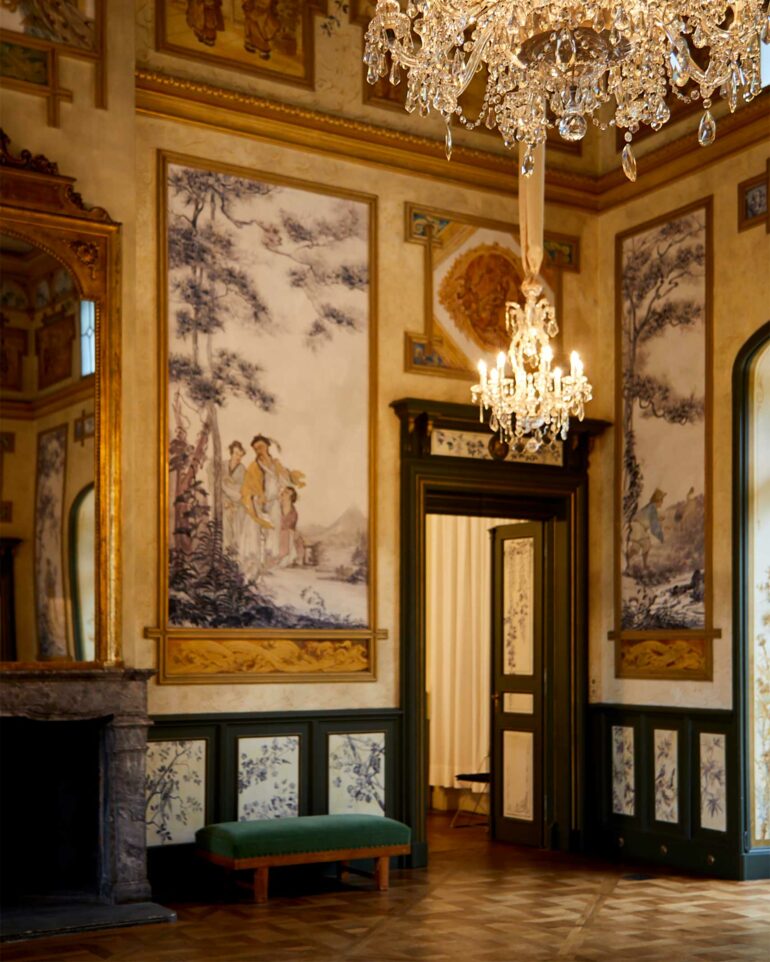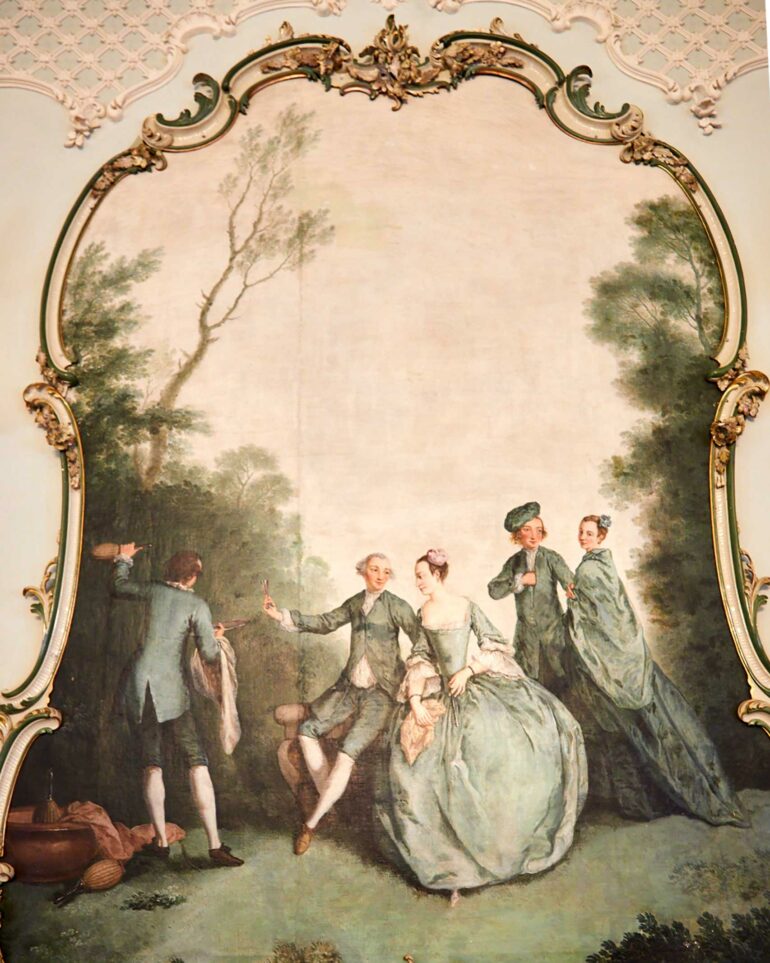Dresden’s star first rose as Saxony’s nexus of flamboyant artistic expression, before the city’s brutal bombing at the end of the Second World War. It’s now a centre for culture again, but Martin Perry finds the diverse voices that helped shape the unique identity of Dresden require some dedicated excavation.
Despite being a bit of an old punk, I’ve never dyed my hair. But heading to Glastonbury with my award-winning hairstylist friend Mikey in tow provides me with as good an opportunity as any to see how I’ll look with bright orange hair.
The compliments flood in, from strangers and friends alike, and something in me switches: I become gregarious, a chatting, dancing social butterfly, and have the best Glastonbury ever. So much so that it’s a miracle I even make my flight to Dresden the next morning – and then somehow manage to stay upright through a day guided around the city’s classic sights. After which, all I can do is to take a long, hot shower before collapsing on to my hotel bed.
The next morning I wake late, roused by a call from reception telling me my host, Christoph Münch from Dresden Tourism, is waiting for me downstairs. I scramble for my clothes, grab my camera and head out of the room. And there, reflected in the large mirror of the lift, is what I can only describe as a human-scale canary. My shower has stripped all the orange dye from my hair, leaving a lurid neon yellow that in the decidedly conservative surroundings of the elegant Relais & Châteaux Hotel Bülow Palais couldn’t look more out of place. The immaculate demeanour of Christoph, in his sensible, age-appropriate shirt and slacks, does little to help. I see his eyes widen momentarily before he assumes a professional smile.

This story first appeared in The California Cool Issue, available in print and digital.
Subscribe today or purchase a back copy via our online shop.
As we leave the hotel, the spire of the stately Lutheran Dreikönigskirche looms above, presiding over the picturesque surroundings of the Baroque Quarter, bristling with artisans, galleries, independent stores and coffee shops, many hidden away in courtyards. We walk through the lovingly restored 18th-century buildings and cobbled streets, past the Japanisches Palais to the Augustus Bridge spanning the majestic Elbe. On the other side of the river stand the imposing Kathedrale Sanctissimae Trinitatis and Dresden Castle, where we jump in a taxi.
The ride gives me a taste of the city’s character. Its broad streets span out in all directions, with relatively little traffic. Allocated lanes separate various forms of transport – trams and buses, cars and cycles – in that way you really only find in modern European cities. It’s an accidental boon of the devastating bombing it suffered at the hands of the Allies in the Second World War.
We pass the huge Großer Garten, home to the Palais Großer Garten, a 17th-century Renaissance villa which, Christoph tells me, is a venue for arts events, the Puppentheater Sonnenhäusel and a ballet school. We drive on, out towards the suburbs.
Half an hour after leaving the hotel, Christoph and I reach the door of a small two-bedroom flat in one of a swathe of former GDR social-housing blocks. The door opens to reveal Esteban Velazquez von Wilhelm. He is wearing a white T-shirt with red paisley-patterned braces holding up a canvas skirt, with a painting of courtiers on it and his name emblazoned on the waist.
The ensemble is set off by baby-pink boots, an eye patch and a bandana across his forehead. Suddenly, I’m feeling a little less self-conscious about my yellow hair and wondering if I’ve lucked out into a more progressive, iconoclastic dimension of the city, whose polite, unreconstructed Classicism has felt almost a little stifling at times.
Sexing up Saxony
Esteban is an artist, and his home cum atelier is as striking and colourful as the man himself. Every surface, wall, floor and item of furniture is covered with paintings and drawings, from floor-to-ceiling canvases to postcard-size sketches depicting grotesque caricatures of 18th-century Saxon royalty. Many are in sexually explicit poses, with exposed penises erect, and the portraits in bright primary colours are executed in vigorous Expressionistic style. Judging by the amount of work on show, prolific doesn’t come close to describing Esteban’s output. The work seems to pour out of him, and I imagine he must be constantly, frenetically at it. But he kindly agrees to take some time out to talk to me – through Christoph, who translates from Spanish to English and back again.
Esteban describes how his family left Germany for Venezuela, and how he never felt at home there. Being white and tall singled him out from his peers, he felt like an outsider, and it had always been his dream to return to his ancestral home. So far, so unremarkable, but then Esteban slips in the fact that he believes his destiny is to reunify the Saxon throne. Is this a provocateur’s prank, I ask myself, or the outpourings of an earnest, driven artist? I have no idea, but either way, the paintings and the man certainly grab one’s attention and, based on my own arresting appearance, I can see how attention garnered from standing out from the crowd can be used to one’s advantage.
“If I were in New York, nobody would be shocked by explicit imagery,” Esteban protests, “but here in Saxony, it’s still controversial.” Whatever his motivation, it’s heartening to catch my first glimpse of Dresden counterculture, an indication that this city has, in fact, a long history as a haven for creatives who don’t fit in.
Among them is the extraordinarily brave Danish painter Lili Elbe, whose life was fictionalised in the film The Danish Girl. It’s a well-meaning yet rather problematic movie, but one positive from it was the recreation by the film’s art department of Lili’s modest grave. It stands on roughly the same spot where her body was buried in Trinitatis Cemetery, opposite the hospital where her surgery was performed. On a special trip to visit Lili’s grave, I find it a poignant experience, though I can’t help but think a more substantial monument would be more fitting.
Meanwhile, in the northern suburb of Radebeul, it’s author Karl May who’s commemorated, at an eponymous museum. In the late 19th century, May’s immensely popular novels were the main source of information for the German public on all matters relating to Native American peoples, and yet, as I learn on my visit to the museum, he hadn’t so much as set foot in the States, let alone consulted with the people with whose culture his name became synonymous. But that doesn’t seem to matter – the museum remains a firm favourite with locals, as a jarring exhibition here of contemporary photographs of white East Germans wearing Native American clothing attests.
Under cover of the Arts?
The Karl May estate also owns an impressive collection of artworks by Sascha Schneider. Commissioned by May to illustrate his book jackets for him, Schneider produced covers that are unequivocally homoerotic, the novels’ heroes depicted as athletic, nude or scantily clad young men in dynamic poses. These caused controversy and led to the books being reprinted with artwork considered more ‘appropriate’. I am lucky enough to be shown a number of Schneider’s artworks. As a long-time lover of figurative queer art, there’s no doubt that as a young boy I would have felt strongly drawn towards the books these paintings adorned and bought them for their covers alone.
So what is it about Dresden, a seemingly quiet and conservative city, that makes it a haven for such characters? Perhaps the answer lies in its history. At the turn of the 18th century, it was regarded as the jewel in the crown of the Saxon monarchy, particularly during the reign of Augustus II, who, on a tour of France and Italy, was struck by the extravagance of Baroque architecture, especially the Palace of Versailles. Keen to advertise his wealth and power, he employed a heavy dose of Versailles style in his main residence, Dresden Castle. He also commissioned a number of lavish palaces in and around the city, including his summer residence, Pillnitz Castle, and his hunting lodges, Moritzburg Castle and Hubertusburg Palace. He introduced the first public museums, including the Grünes Gewölbe, and began amassing a huge collection of paintings now on display in the Gemäldegalerie Alte Meister. Dresden subsequently became renowned as a city of extraordinary cultural brilliance. And, of course, where there are arts, you’ll find queers…
But back to today. Dresden’s newest arts centre, Kraftwerk Mitte, is a converted gasworks, which, along with an impressive array of venues, houses the Staatsoperette Dresden, in a 700-seat theatre built with money raised by members of the company, one of whom, baritone Christian Grygas, agrees to show me around. The spaces are cavernous and the auditorium itself is designed for optimal acoustics. Later over a coffee, Christian shares his story.
“There is a palpable romanticism to the place; a nostalgia for a simpler, rose-tinted past. Gay venues may be few and far between here, but a colourful new generation of LGBTQI+ youth is taking to the streets in unofficial pride marches”
Born in 1970 in a rural East German town, to parents with little capacity for love, Christian grew up under the repressive GDR at a time when it was not okay to be gay. After school and a stint working as an electrician’s apprentice, he was enlisted to do his military service, just as the Berlin Wall came down, taking the factory he was employed at with it. Following his desire to perform, he got a job backstage at a local theatre, where he was taken under the wing of an established singer and given a chance to foster his own talent. He studied music at university and started to pick up paid singing jobs, eventually moving to Dresden, where he could not only be out as a gay man but also fulfil his potential on stage. But he struggled still with self-destructive ghosts from his past, and so began a 20-year journey of self-discovery through therapy and jujutsu, which have helped him find a level of peace.
Christian’s struggle with adversity and reinvention, fuelled by his love for his art, seems not dissimilar to Dresden’s own story. Although much of the city was destroyed in the war, then stifled by the GDR, its refinement, appreciation for the arts and readiness to celebrate the finer things in life have remained central to its identity.
There is a palpable romanticism to the place; a nostalgia for a simpler, rose-tinted past. Gay venues may be few and far between here, but a colourful new generation of LGBTQI+ youth is taking to the streets in unofficial pride marches. My yellow hair and facial piercings may not have the power they once did as signifiers of queer defiance, but by the end of my time in Dresden, the awkwardness they first instilled in me has been replaced with pride, and I begin to enjoy the raised eyebrows they sometimes incite.
Perhaps this city is a place where we can see the importance in not only finding but outwardly showing our true selves. Perhaps, indirectly, my own sense of queerness has been strengthened by the spirits of Lili Elbe and Christian Grygas.
Photography by Melina Kiefe, Olgi and Martin Perry
Get out there
Do…
… hire a bike and explore the city – Dresden’s network of cycling routes and relatively flat terrain make it a perfect place to explore using pedal power.
… board a paddle steamer. The city boasts more of these crafts than New Orleans. Take the trip along the Elbe to Pillnitz Castle with the Sächsische Dampfschifffahrt company.
… make use of public transport – it runs on time, is clean and easy to navigate, and it covers just about everywhere.
Don’t…
… underestimate the time you’ll need to explore – Dresden is like an onion, with layer upon layer of history, so give it a chance to work its magic on you.
… dismiss the Lößnitzgrundbahn as just for trainspotters – the old steam train will transport you to idyllic Moritzburg, from where you can explore by horse and cart.
… miss the opportunity to get across to nearby Meissen. This picture-book town is home to the famous pottery and well worth a visit.
The inside track
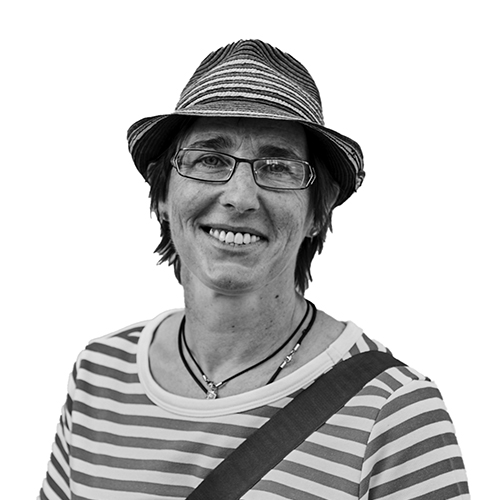
As the owner of Kennst du Dresden?, Anett Lentwojt has a passion for bringing Dresden’s LGBTQ history to life with lively private and group tours of the city, both on foot and by bicycle.
Eat
Elements’ understated self-description as a deli/restaurant/lounge belies the exquisite, imaginative dishes that have earned it a Michelin star. Its airy, upmarket but relaxed industrial setting and slick, friendly service are no less delectable.
Shop and ink
A combined menswear treasure trove and tattoo parlour in the Baroque Quarter, Erika & Kurt specialises in quality American-style utility wear, caps, shoes and jewellery. Their tattoo artists are among Germany’s finest.
Visit
In Weingut Klaus Zimmerling, the eponymous winemaker and Polish-born sculptor Malgorzata Chodakowska have created something magical, combining a winery with a gallery. Enjoy a glass of wine as you admire Malgorzata’s prolific output.


